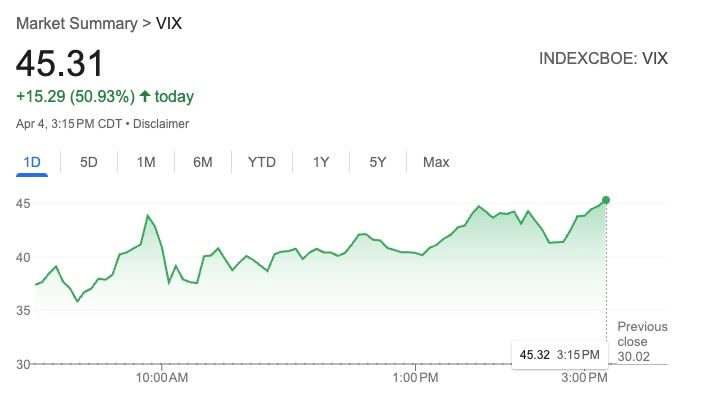Revolutionizing the Workforce: Investment Opportunities in the Future of Work Trends
The future of work is being fundamentally reshaped by trends such as remote work, the gig economy, and automation. These shifts are not only transforming job structures and worker preferences but also creating significant investment opportunities across various sectors. This report explores how these trends are reshaping industries, identifies sectors and companies poised to benefit, and discusses the broader implications for stakeholders.
Introduction
The landscape of work is undergoing a seismic shift driven by technological advancements, evolving worker preferences, and economic pressures. Remote work, the gig economy, and automation are at the forefront of this transformation, each contributing to a redefinition of traditional employment models. This report synthesizes information from multiple sources to provide a comprehensive analysis of these trends and their investment implications.
Remote Work: A New Norm
Prevalence and Impact
Remote work has become a significant aspect of the modern workforce. By 2025, it is estimated that 22% of the American workforce will be remote, with 14% currently working from home full-time. This shift is not limited to the United States; in India, 12.7% of full-time employees are fully remote, with projections indicating that 60 to 90 million Indians will work remotely by 2025.
Industry-Specific Trends
Certain industries are more conducive to remote work. For instance, 89% of employees in the computer and mathematical fields can work remotely, with 52% doing so full-time. Similarly, 86% of business and financial operations employees have remote work options, with 61% working full-time. These statistics highlight the adaptability of knowledge-based industries to remote work formats.
Productivity and Worker Preferences
Remote work has been linked to increased productivity, with one-third of hiring managers reporting higher productivity levels. Additionally, a significant portion of the workforce prefers remote work, with 58% of white-collar workers desiring to work remotely at least three days a week. This preference is echoed globally, with 98% of workers expressing a desire to work remotely at least some of the time.
Investment Implications
The shift towards remote work presents investment opportunities in digital collaboration tools, cybersecurity, and remote work infrastructure. Companies like Zoom, Slack, and Microsoft (with its Teams platform) are well-positioned to benefit from this trend. Additionally, real estate investments may shift towards residential properties as demand for commercial office space declines.
The Gig Economy: Flexibility and Growth
Participation and Earnings
The gig economy continues to grow, with over one-third of the U.S. workforce participating in gig work. Women constitute 63% of U.S. freelance workers, and the global gig economy is expected to reach a gross volume of $455.2 billion by the end of 2023. Despite the flexibility, gig workers earn 58% less on average than full-time salaried employees, highlighting a disparity in earnings.
Technology and Job Acquisition
Technology plays a crucial role in the gig economy, with over 70% of gig workers finding jobs through online marketplaces like Upwork and Fiverr. The ease of job acquisition through these platforms has made gig work more accessible, particularly for younger generations, with 50% of gig workers being Generation Z and 44% Millennials.
Job Satisfaction and Financial Security
Approximately 60% of gig workers report job flexibility, and 79% express happiness with their work. However, financial security remains a concern, with 27% of gig workers having no savings for retirement. This indicates potential investment opportunities in financial services tailored for gig workers, such as retirement savings plans and insurance products.
Investment Implications
Investors should consider platforms that facilitate gig work, such as Upwork, Fiverr, and ridesharing services like Uber and Lyft. Additionally, financial services companies that develop products specifically for gig workers could see significant growth. The healthcare and education sectors also present opportunities as they increasingly adopt gig work models.
Automation: Efficiency and Transformation
Scope and Impact
Automation, driven by robotics, AI, and machine learning, is transforming various sectors. In manufacturing, robotic assembly lines are enhancing efficiency, while in healthcare, AI-assisted diagnostics and robotic surgery are becoming more prevalent. The finance sector is also seeing significant automation in areas like algorithmic trading and fraud detection.
Job Creation and Displacement
While automation may displace certain jobs, it is also expected to create new roles. The World Economic Forum predicts that by 2025, automation could create 97 million new jobs while displacing 85 million, resulting in a net gain of 12 million jobs. New roles will include technicians for automated systems and data analysts.
Reskilling Initiatives
To adapt to automation, companies are investing in reskilling programs. These initiatives include partnerships with educational institutions and apprenticeship programs that combine on-the-job training with classroom instruction. Continuous learning and skills development are essential for workers to remain competitive in an automated landscape.
Investment Implications
Investors should focus on companies developing automation technologies, such as those in the robotics and AI sectors. Additionally, educational platforms like Coursera and Udemy, which offer reskilling and upskilling programs, present significant investment opportunities. Companies that successfully integrate automation while investing in their workforce’s development are likely to gain a competitive edge.
Broader Implications and Future Developments
Economic and Social Impacts
The trends of remote work, the gig economy, and automation have broader economic and social implications. Remote work and the gig economy promote flexibility and work-life balance, but they also raise concerns about job security and financial stability. Automation enhances efficiency but necessitates significant investment in reskilling and workforce development.
Regulatory Environment
Investors must stay informed about changes in labor laws, gig economy regulations, and data privacy requirements. Supporting companies that comply with evolving regulations related to remote work and worker protections is crucial for mitigating regulatory risks.
Future Trends
Looking ahead, the adoption of hybrid work models is expected to increase, with 81% of the workforce projected to adopt a hybrid model by 2024. The gig economy will continue to expand, particularly in sectors like healthcare, education, and professional services. Automation will drive economic growth and create new job opportunities, necessitating a focus on continuous learning and skills development.
Conclusion
The future of work is being reshaped by remote work, the gig economy, and automation, each contributing to a transformation of traditional employment models. These trends present significant investment opportunities across various sectors, from digital collaboration tools and gig platforms to automation technologies and educational platforms. By aligning investment strategies with these evolving trends, investors can capitalize on the opportunities presented by the changing landscape of work in 2024 and beyond. As these trends continue to evolve, staying informed and adaptable will be key to navigating the future of work successfully.


